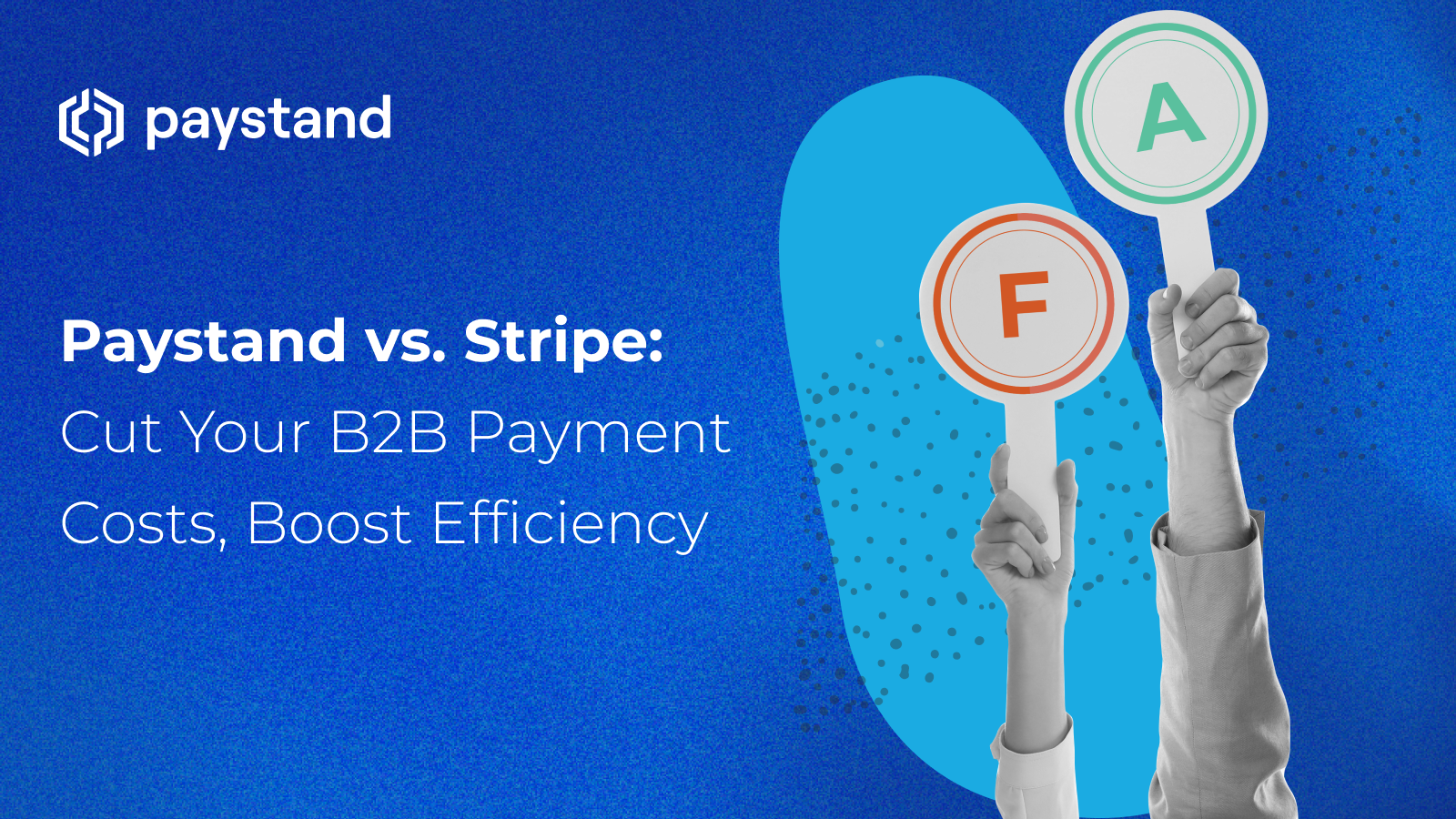Paystand vs. Stripe: Cut Your B2B Payment Costs, Boost Efficiency

Finance leaders always look for smart ways to streamline operations and reduce costs. In B2B transactions, payment processing represents a significant, often under-analyzed expense that can unlock substantial savings.
Let's examine two of the most popular payment solutions on the market: Paystand and Stripe. Although they share the purpose of enabling online payments, their underlying models, pricing structures, and focus areas differ.
Basic Differences Between Paystand vs. Stripe
- Stripe is a well-known payment processing leader. They operate on a traditional fee-based model, where each transaction, whether a credit card, debit card, or alternative method, comes with a percentage-based fee plus a fixed cost. Businesses can expect to pay around 2.9% + $0.30 per transaction.
- Paystand is a game-changer, offering a zero-fee processing model for bank-to-bank and other alternative payment methods. Instead of per-transaction fees, their model primarily relies on a monthly software subscription, giving you access to their powerful B2B-focused payment platform.
How Do Fees Add Up in Paystand vs. Stripe?
Let's look at a visual comparison to see the impact of those different fee structures:
.jpg?width=1201&height=500&name=Paystand%20vs%20Stripe-100%20(1).jpg)
As evident in the chart, for businesses with frequent or high-volume B2B transactions, Paystand's zero-fee model on select payment methods could translate into thousands or even tens of thousands of dollars saved annually.
Automation and Efficiency Gains in Paystand vs. Stripe
While both Stripe and Paystand facilitate payments, the range of features and their focus on streamlining back-office processes differ:
- Stripe: Stripe primarily serves as a payment gateway and processor, offering basic invoicing tools. It suits businesses requiring direct online payment integration into websites or eCommerce platforms.
- Paystand: Paystand serves as a comprehensive B2B financial management hub. It includes advanced features like automated invoicing, intelligent receivables tracking, smart reconciliation, seamless cash application, and customizable workflows to streamline the accounts receivable process.
Security and Reputation in Paystand vs. Stripe
Both Paystand and Stripe prioritize security, adhering to data protection, encryption, and compliance standards. However, Paystand's specialized focus on the unique needs of B2B transactions, along with its blockchain-based payment network, often translates into higher customer satisfaction scores for both support and the robustness of its platform.
Making the Right Choice
Finding your perfect fit hinges on your business model and priorities:
- Stripe may be a solid option for businesses with smaller B2B transaction volumes or those mainly needing simple online payment processing linked directly to their digital storefront.
- Paystand emerges as the superior choice for businesses handling frequent high-value B2B transactions, prioritizing substantial cost reductions, and seeking to improve the efficiency of their accounts receivable process drastically.
Ready to discover the cost-saving, efficiency-boosting power of Paystand? Explore how it could transform your B2B payment operations by booking a demo today.





